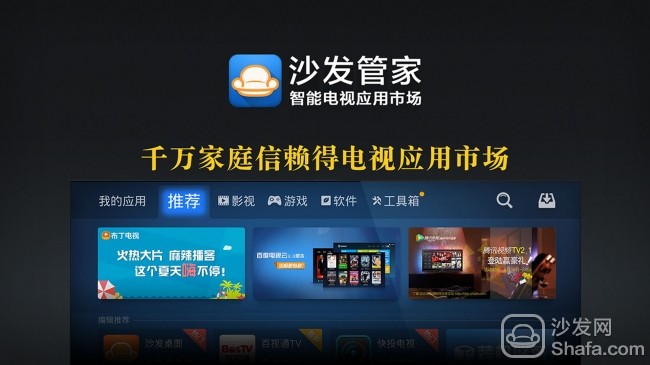2014 OTT TV Development Data Summary
This paper integrates the data and conclusions of the "2014 Asia-Pacific OTT Summit" and combines industry events and data that have occurred in recent days. It attempts to summarize the development of OTT TV in 2014 from the perspective of the entire audio-visual media.
In 2014, the global television/video market appeared to be “livelyâ€. The emerging OTT TV/video business continued to develop rapidly, and people’s TV consumption habits further changed. The traditional TV market is facing a more severe development situation.
1. The evolution of television
With regard to the evolution of television, in general, the industry chain, value chain, and market conditions are undergoing major changes. TV service providers and television transmission network operators as the dominant role and even monopolistic, TV consumer experience has become worse and worse, the more and more traditional television services have become more and more people's "criticism." At the same time, some emerging television services based on program integration platforms are able to satisfy people's needs for flexible and even fully personalised services such as on-demand and on-demand broadcast of TVs, and customized combinations of related service packages.
It can be seen that the general direction of television evolution is very clear: it is centered on users (television consumers). The speed of evolution will depend on the progress of emerging TV service providers in creating highly engaging consumer experiences and exploring emerging business models that meet user needs.
In the direction of TV evolution, two related major events occurred in late October 2014. One is that the U.S. Federal Communications Commission has once again proposed that the U.S. government should adopt the principle of “technology neutrality†to revise the relevant laws promulgated in 1992. From the national legal level, it is clear that emerging online video OTT TV service providers have the same market competition status as traditional cable television operators, telecommunication IPTV operators, and satellite direct broadcast TV operators. The FCC also hopes that OTT TV service providers will provide TV users with more lightweight, more professional video program packages than traditional TV services. As ISPs can work with these OTT TV service providers to launch OTT TV and broadband bundled packages, this move may also further promote the U.S. ultra-wideband market.
Immediately, the National Association of Broadcasters and Television NAB issued a statement: "Welcome that emerging TV service providers are legally providing users with "TV ubiquitous" distribution services for local TV programs. NAB will say "The new video market competition should promote rather than weaken The important issue of the dissemination of local television content has been discussed with the FCC.
At the same time, some traditional mainstream TV stations have started to provide OTT TV services. Recently, for example, CBS News and CBS Interactive launched a CBSN television network for pure OTT transmission in early November; HBO and CBS have already started to directly interact with users through OTT. Terminal devices provide emerging TV services, and ESPN will also provide similar services in 2015.
Another major event is that in mid-November this year, Obama urged the FCC to ban the establishment of an Internet "fast track" and to redefine broadband services as public services.
2, the content is still "king"
At present, people's TV consumption habits are: (1) content mainly considers premium content (such as TV shows that users like to watch) and sub-quality content (such as classic old movies); (2) viewing scenes mainly include “daily viewing†And "watching in special occasions." The following figure shows the types of television programs people watch and the types of TV services that people enjoy most under the influence of the above four factors. Among them, the value of viewing high-quality television content in special occasions is the largest.
3. New changes in the form of television services
Changes in usage of various forms of TV/video services:
The figure below shows the viewing habits that television consumers are changing. Based on "weeks (7 days)", in 2014, about 77% of users watched traditional broadcast television programs frequently, and about 75% of users watched emerging OTT streaming video frequently. In addition, traditional radio and television recording services (such as personal TV video recording PVRs, digital TV video recording DVRs, etc.) and traditional user terminal-based autonomous controllable media players (such as DVDs, Blu-ray players, etc.) are used year by year. Descent, they are gradually replaced by some new TV services (such as nDVR) that are easier to use, more convenient to transfer, and can be on-demand across platforms.
The main factors affecting the online video user experience in mobile communication networks include smooth video playback, traffic consumption, video loading speed, and definition of picture quality. As shown in the figure below, from the past few years to the present, the average time for people to watch video content on televisions has remained basically unchanged, while the time for watching video content on smartphones and tablets has increased significantly (especially Tablet PCs serve as audiovisual terminals. The time for watching video content on desktop PCs is greatly reduced. It can be seen that the trend of “mobilization†of TV/video content is being strengthened.
The 4G users in China “favor†online video, 3G users rely on social communications, and browse the web is still the mainstream demand of 3G/4G network users. In the third quarter, the success rate and fluency of online video playback on 4G networks were better than that of WiFi and 3G networks. In 4G networks, the loading speed of mobile video services was increased by approximately 90% compared to 3G networks (average video buffering time). Reduced from 4.5 seconds for 3G networks to 2.4 seconds for 4G networks). In the video quality of the video playback: currently dominated by high-definition (more than 75% of the proportion); 36% of 4G users choose to watch high-definition video, 16% of 3G users choose to watch high-definition video; It rose to 2.8% (the use of this item was 30% higher than the 4th quarter of 2013).
TV's "displacement" trend:
Factors influencing people to watch mobile TV and watch mobile video outdoors through mobile communication networks:
5. Important features that modern television should have
The importance of television and media content is self-evident to television consumers. It is directly related to whether users are willing to pay for continuous subscriptions - of course, there are other influencing factors (referring to television services in addition to content Other characteristics) exist.
Some TV features that can enhance the user experience are also increasingly favored by people. The relevant features include: (1) More realistic and immersive TV picture quality (such as Full HD TV, 4K/8K Ultra HDTV); (2) There is no advertisement, no commercial propaganda and hype; (3) TV service providers can also purchase the premiere of the latest movie so that people can see the latest movie synchronized with the cinema directly at home through the TV set. (4) TV can be time-shifted and on-demand; (5) Friendly subtitles: TV service providers can provide a variety of subtitle services, so that users of different (such as different nationalities, different nationalities, etc.) can easily watch TV .
Other functional features that are inconsequential to the core experience are not considered as important, and related features include: (1) multi-user video recommendation function; (2) personalized mobile video services sponsored by advertisers; 3) Live broadcast of small or local sports events; (4) Interactive TV functions; (5) "Click to buy" - TV shopping: Ordering via TV service provider via TV remote control or related mobile APP.
6. The Changing TV Business Development Strategy
Nowadays, TV consumers worldwide can no longer be geographically restricted and can watch rich TV/video content through multiple audiovisual terminals. As a result, their perception of the value of a television service rises to the level of the business itself (mainly cost-effectiveness). In this context, OTT TV service is redefining people's views and expectations on TV consumption.
As shown in Fig. 11, at present, TV consumers in the United States are more willing to recommend the use of emerging OTT TVs to other people than to other people (such as relatives, friends, colleagues, etc.) recommending the use of television services from traditional TV service providers. Service provider's television service. In the current United States, NPS (Net Promoter Score, Net Promoter Score, NPS = (Recommendants/Total Samples) × 100% - (Number of Critics/Total Samples) × 100%) of emerging OTT TV services) The average value reached 39, while the average NPS of traditional television services is only 12.
Note: Referrals (between 9-10 scores): are people with fanatic loyalty who will continue to order and recommend to others; passive (score between 7-8): overall satisfaction but not Fanaticism will consider other products that use service provider competitors; critics (scores between 0-6): Use is not satisfied or loyal to service providers.
The differences in NPS values ​​of TV consumers for traditional TV services and emerging TV services can reflect to a greater extent the degree of satisfaction with the core attributes of the two TV formats. In fact, the reason why the emerging OTT TV business is more popular (compared with traditional TV services) is that its price is low, its content is rich, it can be viewed anywhere by any audiovisual terminal, and it is easier to consume. Found the video content they are interested in. In addition, there is also a very important reality: In the past, people always believe that the quality of video and audio provided by the emerging OTT TV business is far less than that of traditional TV services. However, at present, in terms of both video and audio quality, this research The scores used by the interviewees were the same - this shows that in terms of immersion, OTT TV has reached a level comparable to traditional TV.
In 2014, factors influencing global TV consumer satisfaction with traditional and emerging TV service providers:
7. The TV business payment model will tend to be "hybrid" and the strategy that TV service providers should adopt
People's expectation of payment modes for different types of television services:
So, what kind of strategy should TV service providers adopt? As shown below:
8, to create an integrated personalized media experience
Today, the media experience can be considered in many aspects, including TV services, terminal devices, and content sources. Related considerations will soon cover all television and media sectors (except live TV).
However, for a large number of television consumers, managing these separate elements can be very difficult, and TV service providers are required to provide a user-friendly aggregated experience. Nowadays, some traditional TV service providers (such as cable TV network operators) have begun to provide new OTT TV services while providing broadcast live TVs through new set-top boxes, and smart TVs and OTT TV set-top boxes are becoming more intelligent. The above problems are gradually being solved.
If people can watch/view most of the content through the emerging OTT TV platform, the demand for traditional TV platforms will gradually decrease. At present, one of the main reasons why people keep subscriptions to traditional television services is the convenience of access and the ease of use. It is foreseeable that live television (especially live television broadcasts of sports events) will continue to have high value for television viewers in the future. On the other hand, TV service providers can also increase to a certain degree if they can provide users with personalized and accurate advertising services (whether a user has the right to control or not) and complete customization of live TV content. value of customer.
In 2014, the global television/video market appeared to be “livelyâ€. The emerging OTT TV/video business continued to develop rapidly, and people’s TV consumption habits further changed. The traditional TV market is facing a more severe development situation.
1. The evolution of television
With regard to the evolution of television, in general, the industry chain, value chain, and market conditions are undergoing major changes. TV service providers and television transmission network operators as the dominant role and even monopolistic, TV consumer experience has become worse and worse, the more and more traditional television services have become more and more people's "criticism." At the same time, some emerging television services based on program integration platforms are able to satisfy people's needs for flexible and even fully personalised services such as on-demand and on-demand broadcast of TVs, and customized combinations of related service packages.
It can be seen that the general direction of television evolution is very clear: it is centered on users (television consumers). The speed of evolution will depend on the progress of emerging TV service providers in creating highly engaging consumer experiences and exploring emerging business models that meet user needs.
In the direction of TV evolution, two related major events occurred in late October 2014. One is that the U.S. Federal Communications Commission has once again proposed that the U.S. government should adopt the principle of “technology neutrality†to revise the relevant laws promulgated in 1992. From the national legal level, it is clear that emerging online video OTT TV service providers have the same market competition status as traditional cable television operators, telecommunication IPTV operators, and satellite direct broadcast TV operators. The FCC also hopes that OTT TV service providers will provide TV users with more lightweight, more professional video program packages than traditional TV services. As ISPs can work with these OTT TV service providers to launch OTT TV and broadband bundled packages, this move may also further promote the U.S. ultra-wideband market.
Immediately, the National Association of Broadcasters and Television NAB issued a statement: "Welcome that emerging TV service providers are legally providing users with "TV ubiquitous" distribution services for local TV programs. NAB will say "The new video market competition should promote rather than weaken The important issue of the dissemination of local television content has been discussed with the FCC.
At the same time, some traditional mainstream TV stations have started to provide OTT TV services. Recently, for example, CBS News and CBS Interactive launched a CBSN television network for pure OTT transmission in early November; HBO and CBS have already started to directly interact with users through OTT. Terminal devices provide emerging TV services, and ESPN will also provide similar services in 2015.
Another major event is that in mid-November this year, Obama urged the FCC to ban the establishment of an Internet "fast track" and to redefine broadband services as public services.
2, the content is still "king"
At present, people's TV consumption habits are: (1) content mainly considers premium content (such as TV shows that users like to watch) and sub-quality content (such as classic old movies); (2) viewing scenes mainly include “daily viewing†And "watching in special occasions." The following figure shows the types of television programs people watch and the types of TV services that people enjoy most under the influence of the above four factors. Among them, the value of viewing high-quality television content in special occasions is the largest.
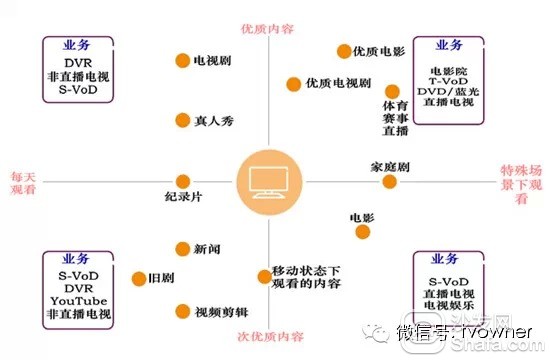
3. New changes in the form of television services
Changes in usage of various forms of TV/video services:
The figure below shows the viewing habits that television consumers are changing. Based on "weeks (7 days)", in 2014, about 77% of users watched traditional broadcast television programs frequently, and about 75% of users watched emerging OTT streaming video frequently. In addition, traditional radio and television recording services (such as personal TV video recording PVRs, digital TV video recording DVRs, etc.) and traditional user terminal-based autonomous controllable media players (such as DVDs, Blu-ray players, etc.) are used year by year. Descent, they are gradually replaced by some new TV services (such as nDVR) that are easier to use, more convenient to transfer, and can be on-demand across platforms.
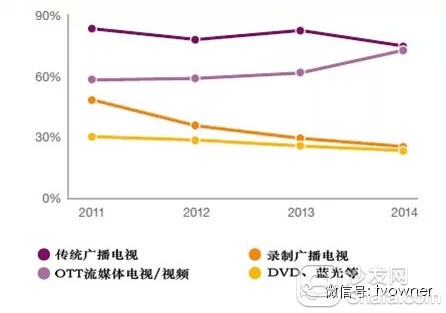
In 2014, the percentage of U.S. TV consumers using OTT TV-on-demand TV service brands was:

4. Development of mobile TV/video
The main factors affecting the online video user experience in mobile communication networks include smooth video playback, traffic consumption, video loading speed, and definition of picture quality. As shown in the figure below, from the past few years to the present, the average time for people to watch video content on televisions has remained basically unchanged, while the time for watching video content on smartphones and tablets has increased significantly (especially Tablet PCs serve as audiovisual terminals. The time for watching video content on desktop PCs is greatly reduced. It can be seen that the trend of “mobilization†of TV/video content is being strengthened.


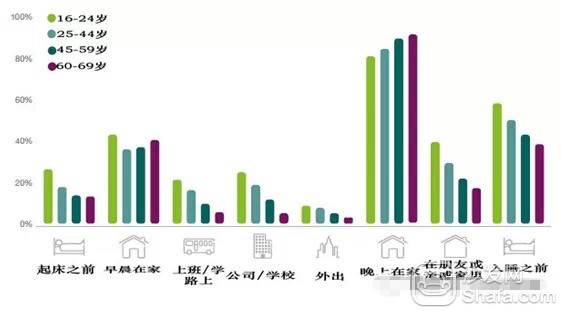
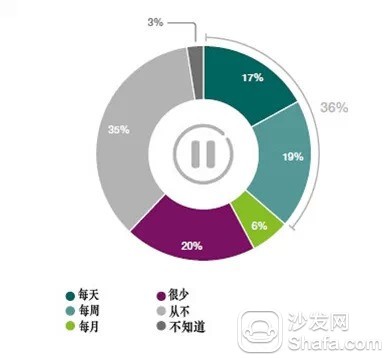
TV's "displacement" trend:
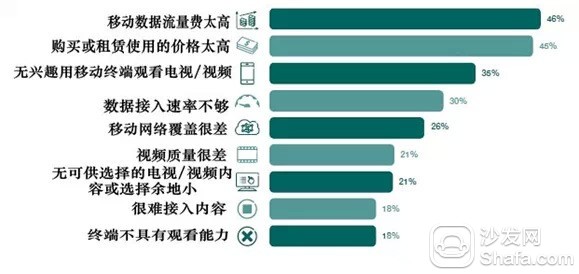
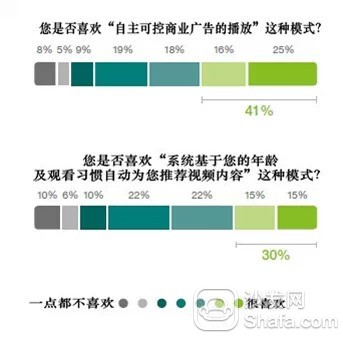
The importance of television and media content is self-evident to television consumers. It is directly related to whether users are willing to pay for continuous subscriptions - of course, there are other influencing factors (referring to television services in addition to content Other characteristics) exist.
Some TV features that can enhance the user experience are also increasingly favored by people. The relevant features include: (1) More realistic and immersive TV picture quality (such as Full HD TV, 4K/8K Ultra HDTV); (2) There is no advertisement, no commercial propaganda and hype; (3) TV service providers can also purchase the premiere of the latest movie so that people can see the latest movie synchronized with the cinema directly at home through the TV set. (4) TV can be time-shifted and on-demand; (5) Friendly subtitles: TV service providers can provide a variety of subtitle services, so that users of different (such as different nationalities, different nationalities, etc.) can easily watch TV .
Other functional features that are inconsequential to the core experience are not considered as important, and related features include: (1) multi-user video recommendation function; (2) personalized mobile video services sponsored by advertisers; 3) Live broadcast of small or local sports events; (4) Interactive TV functions; (5) "Click to buy" - TV shopping: Ordering via TV service provider via TV remote control or related mobile APP.

Nowadays, TV consumers worldwide can no longer be geographically restricted and can watch rich TV/video content through multiple audiovisual terminals. As a result, their perception of the value of a television service rises to the level of the business itself (mainly cost-effectiveness). In this context, OTT TV service is redefining people's views and expectations on TV consumption.
As shown in Fig. 11, at present, TV consumers in the United States are more willing to recommend the use of emerging OTT TVs to other people than to other people (such as relatives, friends, colleagues, etc.) recommending the use of television services from traditional TV service providers. Service provider's television service. In the current United States, NPS (Net Promoter Score, Net Promoter Score, NPS = (Recommendants/Total Samples) × 100% - (Number of Critics/Total Samples) × 100%) of emerging OTT TV services) The average value reached 39, while the average NPS of traditional television services is only 12.
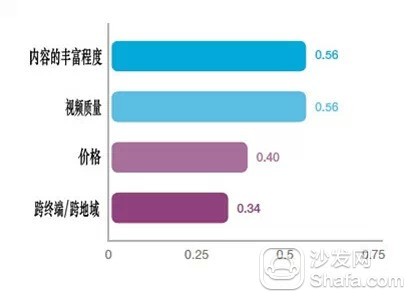
The differences in NPS values ​​of TV consumers for traditional TV services and emerging TV services can reflect to a greater extent the degree of satisfaction with the core attributes of the two TV formats. In fact, the reason why the emerging OTT TV business is more popular (compared with traditional TV services) is that its price is low, its content is rich, it can be viewed anywhere by any audiovisual terminal, and it is easier to consume. Found the video content they are interested in. In addition, there is also a very important reality: In the past, people always believe that the quality of video and audio provided by the emerging OTT TV business is far less than that of traditional TV services. However, at present, in terms of both video and audio quality, this research The scores used by the interviewees were the same - this shows that in terms of immersion, OTT TV has reached a level comparable to traditional TV.
In 2014, factors influencing global TV consumer satisfaction with traditional and emerging TV service providers:
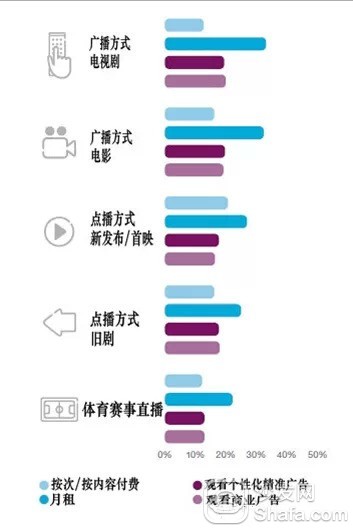
People's expectation of payment modes for different types of television services:
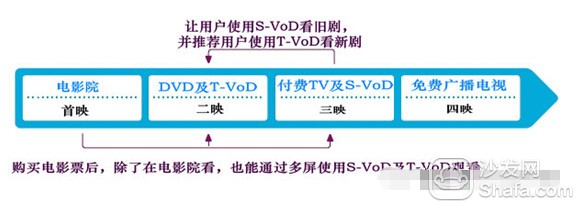
8, to create an integrated personalized media experience
Today, the media experience can be considered in many aspects, including TV services, terminal devices, and content sources. Related considerations will soon cover all television and media sectors (except live TV).
However, for a large number of television consumers, managing these separate elements can be very difficult, and TV service providers are required to provide a user-friendly aggregated experience. Nowadays, some traditional TV service providers (such as cable TV network operators) have begun to provide new OTT TV services while providing broadcast live TVs through new set-top boxes, and smart TVs and OTT TV set-top boxes are becoming more intelligent. The above problems are gradually being solved.
If people can watch/view most of the content through the emerging OTT TV platform, the demand for traditional TV platforms will gradually decrease. At present, one of the main reasons why people keep subscriptions to traditional television services is the convenience of access and the ease of use. It is foreseeable that live television (especially live television broadcasts of sports events) will continue to have high value for television viewers in the future. On the other hand, TV service providers can also increase to a certain degree if they can provide users with personalized and accurate advertising services (whether a user has the right to control or not) and complete customization of live TV content. value of customer.
Recommended installation sofa butler Download: http://app.shafa.com/
